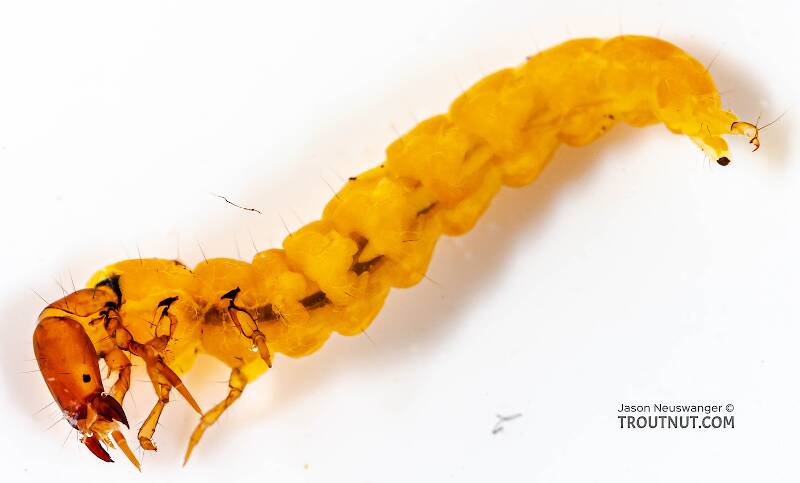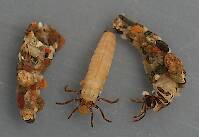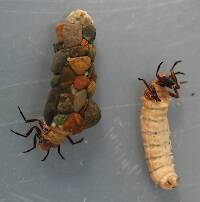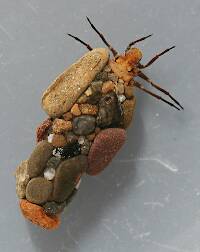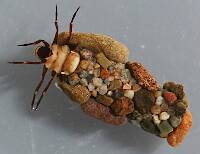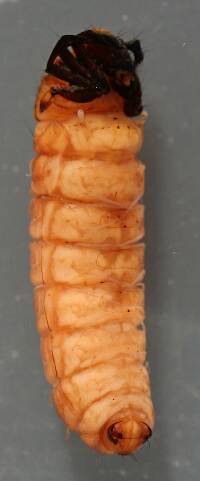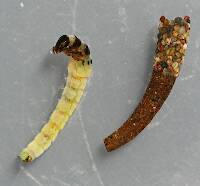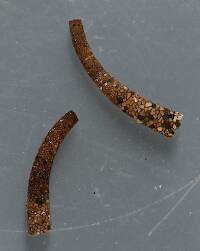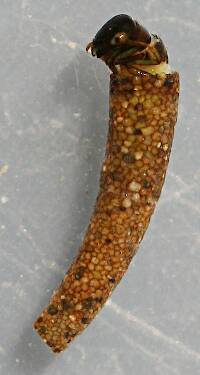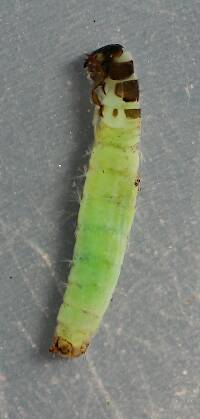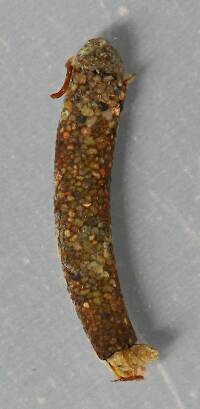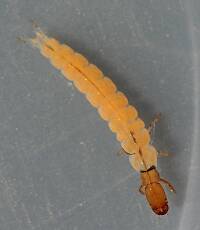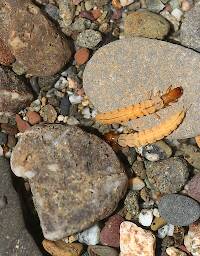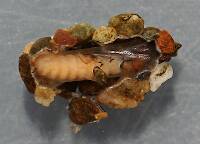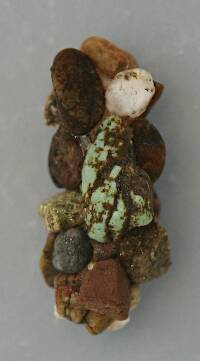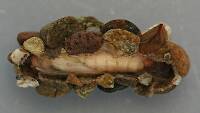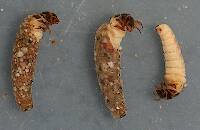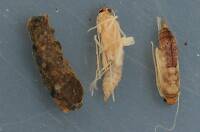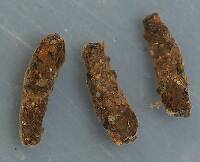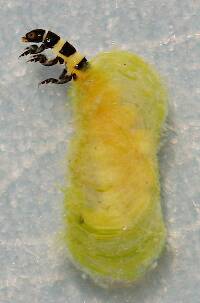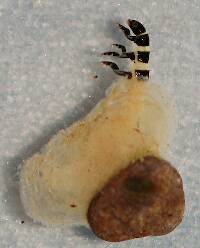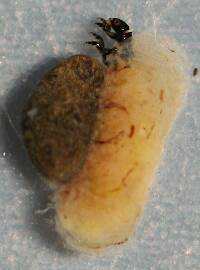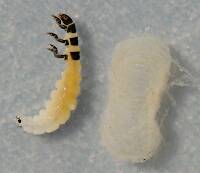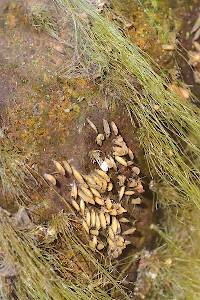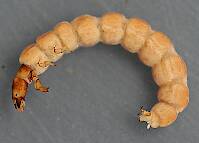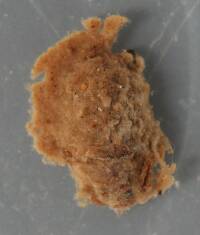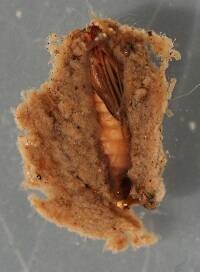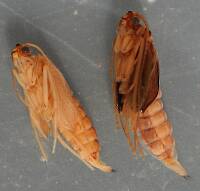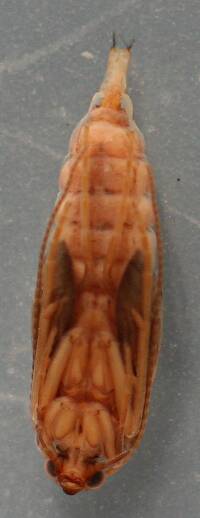
Salmonflies
Pteronarcys californica
The giant Salmonflies of the Western mountains are legendary for their proclivity to elicit consistent dry-fly action and ferocious strikes.
Featured on the forum

I was not fishing, but happened to be at an unrelated social event on a hill above this tiny creek (which I never even saw) when this stonefly flew by me. I assume it came from there. Some key characteristics are tricky to follow, but process of elimination ultimately led me to Sweltsa borealis. It is reassuringly similar to this specimen posted by Bob Newell years ago. It is also so strikingly similar to this nymph from the same river system that I'm comfortable identifying that nymph from this adult. I was especially pleased with the closeup photo of four mites parasitizing this one.

Troutnut is a project started in 2003 by salmonid ecologist Jason "Troutnut" Neuswanger to help anglers and
fly tyers unabashedly embrace the entomological side of the sport. Learn more about Troutnut or
support the project for an enhanced experience here.
Entoman on Feb 21, 2014February 21st, 2014, 9:11 pm EST
That helps Mack. Those were most likely pupae in their early development and thus retained a lot of larval color. By the time they emerge they have largely (usually) taken on the color of the adults, though in some cases more vibrant. The word pupa is often erroneously used by us anglers to describe what are technically pharate adults (pharates that have eclosed from the pupal cuticle and exited their shelters). This is why there is so much confusion about color. A species seined from the drift in the process of emergence can look quite different in color from its brothers pried from a rock earlier in the cycle.
Though I can't think of an orange pharate adult or "emergent pupa" in that size range (they are usually either very tiny or very large), there are several possibilities for it in early development. The saddle-case makers of the Glossosomatidae, smaller tube case making Limnephiloidea like the Apataniidae smoky sedges and even the philopotamid finger-net caddis like the Chimarra example above could possibly be orange hued as larvae and early stage pupae. Coloration can vary quite a bit depending on habitat and strain and samples are thin. Try to get some pictures this Summer.
I'm trying, Roger...;)
Though I can't think of an orange pharate adult or "emergent pupa" in that size range (they are usually either very tiny or very large), there are several possibilities for it in early development. The saddle-case makers of the Glossosomatidae, smaller tube case making Limnephiloidea like the Apataniidae smoky sedges and even the philopotamid finger-net caddis like the Chimarra example above could possibly be orange hued as larvae and early stage pupae. Coloration can vary quite a bit depending on habitat and strain and samples are thin. Try to get some pictures this Summer.
I'm trying, Roger...;)
"It's not that I find fishing so important, it's just that I find all other endeavors of Man equally unimportant... And not nearly as much fun!" Robert Traver, Anatomy of a Fisherman
Jmd123 on Feb 22, 2014February 22nd, 2014, 7:39 am EST
Kurt, Roger is just trying to "keep it real", or at least keep it about fly fishing...
;oD
Jonathon
;oD
Jonathon
No matter how big the one you just caught is, there's always a bigger one out there somewhere...
Entoman on Feb 22, 2014February 22nd, 2014, 10:14 pm EST
Yes, I got that.
"It's not that I find fishing so important, it's just that I find all other endeavors of Man equally unimportant... And not nearly as much fun!" Robert Traver, Anatomy of a Fisherman
Oldredbarn on Feb 23, 2014February 23rd, 2014, 6:13 am EST
Sorry Roger...I have a short attention span.
Spence
Spence
"Even when my best efforts fail it's a satisfying challenge, and that, after all, is the essence of fly fishing." -Chauncy Lively
"Envy not the man who lives beside the river, but the man the river flows through." Joseph T Heywood
"Envy not the man who lives beside the river, but the man the river flows through." Joseph T Heywood
Taxon on Feb 23, 2014February 23rd, 2014, 9:39 am EST
:-)
Crepuscular on Feb 23, 2014February 23rd, 2014, 4:46 pm EST
Yes, I got that.
:)
Entoman on Feb 24, 2014February 24th, 2014, 5:11 pm EST
The lack of larval cases excludes all but the philopotomids, at least from my list of possibilities. Perhaps they are the less common Dolophilodes (Winter Caddis). That would explain the relative lack of Pupae during your early Summer sampling. They do emerge a little in the Summer, but are mostly Fall/Winter emergers. Another possibility is Wormaldia (Little Fall Stream Caddis). Though even less common, they are more likely to be found in the smaller upland streams you frequent than the other two. What has me wondering more than the color you are reporting is their size. A size 16 is outsized for these genera according to most reports. Without a look at the critter, discussions of what it may or may not be is pretty speculative.
"It's not that I find fishing so important, it's just that I find all other endeavors of Man equally unimportant... And not nearly as much fun!" Robert Traver, Anatomy of a Fisherman
Quick Reply
Related Discussions
Topic
Replies
Last Reply
4
Oct 29, 2014
by Millcreek
by Millcreek
8
Aug 25, 2014
by Millcreek
by Millcreek


